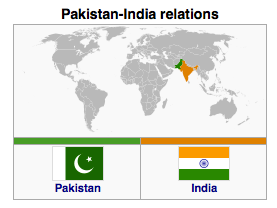The Nimoo-Bazgo Hydroelectric Power Project: Potential And Future Prospects – Analysis
By IPCS
By Zainab Akhter
The Government of Pakistan has decided not to file a lawsuit in the International Court of Arbitration (ICA) over the controversial 45MW Nimoo-Bazgo hydroelectric power project on River Indus in Leh. Pakistan took this decision during the secretary-level talks between India and Pakistan held in New Delhi on 5 July 2012. What are the energy needs of the region? How will the Nimoo-Bazgo hydro-project be beneficial?
Current status

The Union government of India and the Jammu and Kashmir state government are working on a series of small power generation projects to help Ladakh overcome its power deficit. Ladakh, which includes the two districts of Kargil and Leh, has a huge hydro-power potential for generation of electricity due to grade and discharge (the amount of water that flows through the river bed) in the river. Earlier, due to non-accessibility of the area, only a soft project like Satkna Hydal Project was commissioned in 1980, giving approximately 4.5MW of power during the peak period, and that to only to Leh.
Currently, the available electricity produced from the mini-hydel projects is grossly inadequate and most part of Ladakh gets electricity only for five hours in the evening (1800hours to 2200hours). Some remote villages in the region do not even have an electricity line and they depend on the traditional lamps to meet their requirements. Also, diesel generators and solar energy are used as an alternate source of energy to produce electricity when there are power cuts. With the expansion of the tourism sector and use of electrical gadgets specifically in Leh, the electricity demands have also increased.
The Nimoo-Bazgo project
The Nimoo-Bazgoo power project is a run-of-the-river scheme on Indus and is one of the highest hydel power projects in the world, located at over 10,000 feet above sea-level. This project, which proposes to harness the hydel potential of Indus and Zanskar rivers, is capable of generating 45MW of electricity, which is likely to meet the electricity demands of the entire Ladakh region. The project is currently under construction and is expected to be completed by the end of this year.
Benefits
This project would enable the Government to reduce the power shortage in Ladakh. This region is not connected with the Northern grid and, thus, most of the power generated from this project would be absorbed in the Ladakh region. There are villages in Ladakh, which still do not have electric lines and they depend on the traditional Ladakhi lamps to meet the electricity needs. On the completion of this ambitious project there are plans to cover these villages and provide them electricity, according to the present Indus Commissioner A. Ranganathan.
The erratic power supply gets worse in the winter season when there is heavy snowfall and the region remains inaccessible for many months. This project will be beneficial during these harsh winter months as it aims at providing electricity all year round. “Although the speed of power production will be hampered due to the extreme climatic conditions, but the Nimoo-Bazgo project is equipped enough to provide electricity to the region in winters as well” said the Indus water commissioner. Another power project, Chuttuk (44MW) on the Suru River in Kargil, is in the advanced stage of construction, and according to the commissioner there are plans to connect Chuttuk and Nimoo-Bazgo power project in the future so as to accelerate the overall electricity production capacity, thereby making it more beneficial.
On the completion of the Nimoo-Bazgo project, there are plans to extend it to the Northern grid through a 220KV transmission line from Leh to Srinagar.
The future
The vast potential of these twin districts can be developed up to the optimum, if the construction of a tunnel across the gateway to Ladakh Zoji-la comes into reality. This will also make the transmission of power from Ladakh to Kashmir possible, which is presently not possible due to the unfavourable terrain and unavailability of a feasible underground transmission technology. Thus, restrictions are imposed automatically for generating and tapping the huge potential of the rivers in Ladakh. The region is vital for the state of Jammu and Kashmir and it should be made self-sufficient in every sense. Hydro-electric power potential could be fully utilized so as to give a huge boost to the tourism potential of the region and also to accelerate its economy.
The government should pay adequate attention to harnessing the hydro-electrical projects in the region so as to fulfil the energy requirements of the cold desert, as well of Jammu & Kashmir. In addition, Ladakh is a gateway to Central Asia – an important station on the silk route. These routes need to be revived in order to make Ladakh realise its full potential.
Zainab Akhter
Research Intern, IPCS
email:[email protected]
